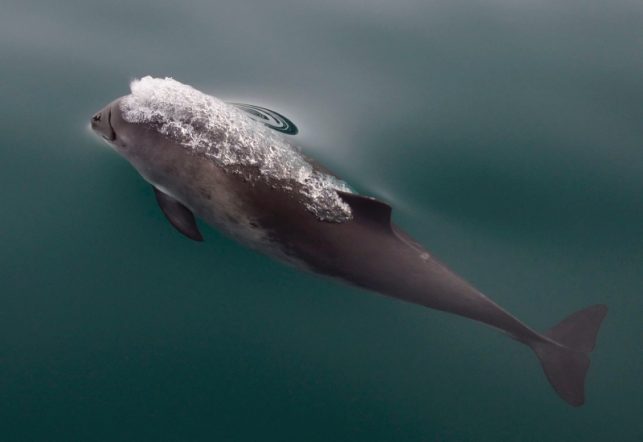
Marine scientists in Oban have found noise from devices used to stop seals eating farmed fish and damaging nets, may unintentionally harm other species like harbour porpoise.
Acoustic Deterrent Devices (ADDs), used to stop seals eating farmed fish and damaging netting, emit an unpleasant sound and were introduced as an alternative to shooting seals.
A new study by scientists at Dunstaffnage-based Scottish Association for Marine Science (SAMS) and the Centre for Fisheries and Aquaculture Science (CEFAS) has made its findings based on combined noise from ADDs from 120 fish farms covering an area from Cape Wrath to the Clyde.
The study area included the Inner Hebrides and the Minches Special Area of Conservation (SAC) for harbour porpoise, the largest of its kind in Europe.
Research using data from 2017 showed there were large areas in the SAC that were regularly exposed to high noise levels from ADDs and that the accumulative levels could result in porpoises experiencing temporary hearing loss up to 28 kilometres from a farm.
The scientists behind the report are now urging marine policy makers and the aquaculture industry to consider the potential large-scale impact that farms emitting excess noise together could have on the eco-system.
Acoustic Deterrent Devices
Although newer ADDs are now available, the cumulative noise of these devices and configurations has not yet been assessed.
Lead author of the report Charlotte Findlay, a final year University of the Highlands and Islands PhD student based at SAMS, said previous studies on noise from ADDs had tended to only look at individual farms or areas in isolation.
‘Although the ecological consequences of these findings for harbour porpoises are not fully understood, the large extent of impact zones within a protected area for the species demand careful consideration by policymakers and industry.’
Reducing the noise level and the regularity at which ADDs produce noise and limiting
the number of ADDs on a farm can all help to reduce the overall noise in the ocean, said Ms Findlay.
Dr Denise Risch a co-author of the study, published in the Journal of Applied Ecology, added alternative solutions to ADDs, such as the use of more robust netting material and better tensioning of net pens, do exist and have been proven successful in reducing seal predation in some areas.
Their expanded use should be further explored and encouraged as a way to reduce the overall noise footprint from ADDs on the Scottish west coast,’ he said.
The Scottish Salmon Producers Organisation says that there are currently no ADDs in use at Scottish farms but it would consider redeploying newer devices compliant with Marine Scotland and the U.S. Marine Mammals Protection Act (MMPA), adding that this consideration would be science led.
This article was originally published as Seal scarer devices may harm harbour porpoise at The Oban Times.
Tags: ADDs, Porpoise, Research, Salmon Farm